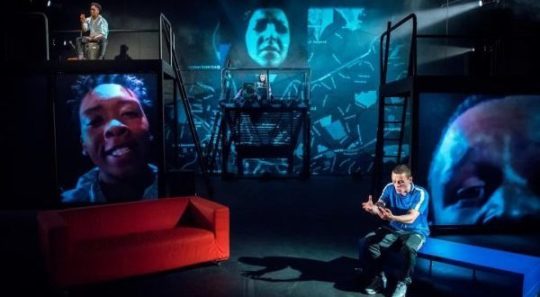REPOST- WEEK FOUR- Dramatic Action and Driving The Story with In-Sook Chappell
During this public health emergency, the safety and wellbeing of our staff, artists, audiences and families comes first. We are exploring ways in which we…
During this public health emergency, the safety and wellbeing of our staff, artists, audiences and families comes first.
We have been exploring ways in which we can all remain connected and optimistic. The Bruntwood Prize has always been about much more than the winners. It is about opening up playwriting to anyone and everyone, to support anyone interested in playwriting to explore the unique power of creative expression. Therefore we want to make this website a resource now for anyone and everyone to explore theatre and plays and playwriting.
So we will still be highlighting the many different resources archived on this website over the coming weeks, as well as sharing the ongoing work of the Royal Exchange Theatre.
This week, we continue the repost of our playwriting Toolkit with the brilliant Zodwa Nyoni
As a writer you will have to ask yourself, Is this an image I want in the play? If I so, when and how do I show it? What does it mean? How will my choices affect the audiences’ understanding of the idea/themes/messages expressed in the play?
Ode to Leeds (Zodwa Nyoni) uses poetic language to explore the diverse experiences of young poets growing up in Leeds. In the opening performance, Darcy a 15-year old girl living in care states: “You were trying to find your way with a broken compass for a heart”. Emotionally she feels worthless at the start of the play. She uses slam poetry to examine her life to find direction and purpose.
ODE TO LEEDS – PROLOGUESCENE 1 EXTRACT

Ode to Leeds. Photo Credit Anthony Robling
Death and the King’s Horseman (Wole Soyinka) is a metaphor for the clash between European and African cultures and societies, as seen in the clash between Elesin and Pilkings.
The Mountaintop (Katori Hall) is about the last night of Martin Luther King’s life. The subject of the play is not obvious from the title. The title is taken from a speech he made earlier that evening, “because I have been to the mountaintop.” Through connecting to the character and his work, the importance of play is evoked as you read/watch it.
Hamilton (Lin-Manuel Miranda) references in the song ‘Hurricane’, the event of a hurricane destroying Hamilton’s home town. He writes about the destruction. The community is moved to raise money and send him to New York. It changes the trajectory of his life. Later, the hurricane imagery has a metaphoric meaning, when Burr, Jefferson, and Madison use Hamilton’s affair to destroy his reputation. Hamilton feels like he is ‘in the eye of a hurricane’. He has to choose between his family and his political career.
Exercises
Zodwa Nyoni is a writer based in Leeds. She won the Channel 4 Playwright’s Scheme in 2014 and was made Writer-in-Residence at the West Yorkshire Playhouse. She’s previously been: Apprentice Poet-in-Residence at Ilkely Literature Festival (2013), Leeds Kirkgate Market (2012), Poet-in-Residence at Writer-in-Residence at I Love West Leeds Festival (2010) and BBC Radio Leeds (2006),
She’s performed her poetry nationally and internationally at venues and events including: British Museum, Ilkely Literature Festival, Bridlington Literature Festival, Venezuelan Embassy, Latitude Festival, Southbank Centre, eKhaya Multi Arts Center (Durban), Nuyorican Poets Café (New York, USA) and Historic Hampton House (Miami, USA). Her poetry is featured in the Suitcase Book of Love Poems, Sable Lit Magazine, The Warehouse Magazine (Canada) and Aesthetica Magazine’s Creative Works Annual 2009.
Her theatre credits include : Of Home and Each Other ( 2018,Splash&Ripple/University of West England), Ode to Leeds (2017, Leeds Playhouse), Borderline (2017, Young Vic), Weathered Estates (2017, University of Hull/ Hull City of Culture), Boi Boi is Dead (2015, Tiata Fahodzi, Leeds Playhouse & Watford Palace Theatre), Nine Lives ( 2014, Oron Mor/Leeds Playhouse), Home Has Died (2012, Lift Off Festival ) ; and The Povo Die Till Freedom Comes (2010, Freedom Studios). Her plays are published with Bloomsbury.
Her radio credits include: Love Again (2016, BBC Radio 3). Zodwa recently made her first short film, ‘Mahogany’ (2018) commissioned by the National Trust and 24 Design Ltd. It tells the perilous journey of slaves and mahogany from the Caribbean to stately homes in England.
She is currently commissioned at Kiln Theatre and Manchester Royal Exchange Theatre.
If you’d like some more exercises on imagery and metaphor the 2017 livestream workshop with playwright and Bruntwood Prize winner Phil Porter and a blog by director Lyndsey Turner on activating an image
Comments
Add comment